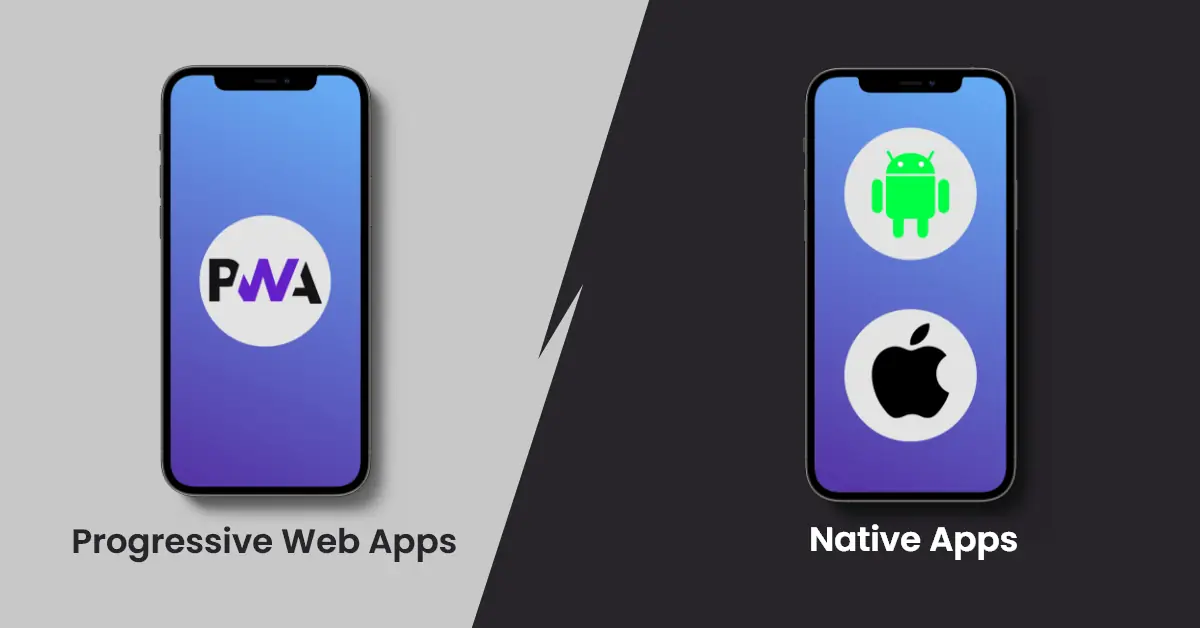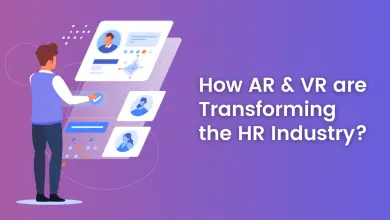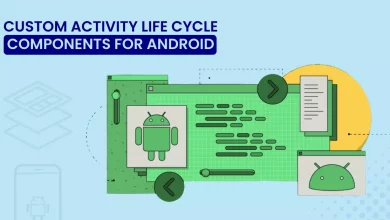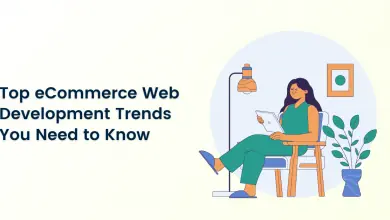PWA vs Native App Development: Which is the Best for your Business?

Mobile use occupies a large part of our lives. Looking at our smartphones at least several times a day has become a routine for most of us. For years, the only way for businesses to reach mobile users was to build a native (or hybrid) mobile app. But today, PWA technology has become an alternative solution for businesses of all sizes to engage with active mobile users.
In this article, we’ll learn the difference between PWA and native apps. In addition, we’ll try to determine when your business should create a PWA and when a native mobile app is the best option in the progressive web app and native app comparison.
What is PWA?
Progressive web apps are an emerging technology from Google. In short, PWAs have connected the best of native web and mobile technologies.
According to the Ericsson Mobile report, during the first quarter of 2018, mobile traffic exceeded 16 exabytes worldwide. (For the record: 1 exabyte = 1 million terabytes).
This is one of the reasons why businesses need to put more effort into acquiring as many customers as possible using mobile apps.
The Progressive web application capabilities allow it to work as a website, but offer a nearly fully native app experience.
This includes push notifications, offline pages, and sensitive pages to your screen size. Even if you don’t have a native app but want to reach mobile users it doesn’t matter if they have a poor internet connection or not at all.
Here’s how Google defines benefits for business owners and users:
- Improved Conversion: Fast-loading pages prevent users from abandoning the app and help them find what they are looking for quickly.
- Increased engagement: Push notifications instantly alert users to new content.
- Reliable Operation: Due to pre-caching, PWAs work even when there is no connection.
Let’s understand the Progressive web app and native app comparison to various aspects like app building, user engagement, etc, and see what are the pros and cons and each type of app.
PWA vs Native App Development: Detailed Comparison:
1. Creation and Launch of the Application in the Market
Native Application
The development of Native mobile apps for iOS and Android requires 2 teams, one for each system. Even if the applications for both systems are developed at the same time, it will take even longer to ensure that the functionality is the same for both applications. All of this represents considerable time and cost to create an application.
Submission and approval through stores are a separate part of launching the native mobile app. The product will have to go through a period of moderation, which usually takes time. While not drastic, it delays the deployment of your app to the market.
PWA
Building a PWA only requires one skilled web development team, as it is actually a website, but with some native app functionality. Here, the process of creating and launching the app is faster for two reasons:
A PWA is still a website, albeit an accelerated one; you only need a team of web developers to create it. They will deal with PWA technological components. This will drastically reduce the time it takes to register for the market.
Validation through stores is not required because you are building a website. You don’t have to submit your app to a store or wait for it to be approved. Once the PWA is built and published to the web, it’s ready to go.
To conclude on the progressive web app and native app comparison with respect to the creation and launch of the application in the market, a PWA is more efficient in terms of cost and time. It will cost more to build a native mobile app, and it will take a little longer to launch due to submission to Apple and Google stores.

2. The Distribution of the Application
Native Application
So far, the Google Play Store has over 2.5 million apps. Apple App Store lists around 2.5 million native mobile apps, not including games.
What does this mean to you?
There are millions of other apps on the market. For users to find and install your app, you must be using at least one of the following:
- Unique (which can be difficult given the size of the market);
- Extremely valuable, users would, therefore, be particularly interested in this application;
- Easy to notice which means paid promotion.
Of course, every business with an app wants to gain more customers. With so many businesses and all the choices of consumers, the competition is tougher than ever. This means that you will have to spend a considerable budget on advertising, as in most cases this is the only way to make your app visible.
PWA
With PWAs, the distribution process is different. Since this is a website, a user doesn’t even need to know that you have a PWA. The user will search Google for a product or service and find your scalable website, which will suggest adding it to the home screen.
Google Search Optimization, which has already fully implemented mobile indexing, works better than app search optimization.
Does it make a difference to you? Yes! Your progressive website may be listed earlier in Google search results, which makes it easier to discover. Every business wants to be noticed by its potential customers. Here the situation is ambiguous. If we are talking about people searching through Google, a PWA is a leader.
But if you’re talking about the ones that go straight to the App Stores, the native mobile app is the winner (however, it will take some extra promotion for people to find it).
It all depends on the target of your business. So in this PWA vs native app development aspect, both have their own benefits and are based on your target audience.
3. Installation
Native Application
To install your mobile app, an average user will need to:
- Find your service among all these millions of applications
- Download and install your app
- And only now they will be able to open it and use it
PWA
Below are the simple steps to install PWA.
- Find your PWA site via Google. Open it
- Allow “Add to Home Screen” when the pop-up prompt appears. (iOS users will need to use the “Add to Home Screen” option in a browser menu)
- The app is on the home screen, and ready to use.
What does this mean to you? A PWA is set up quickly and easily, reducing the chances of losing your customer.
Installing a native mobile app can take a bit longer than a PWA. So in this PWA vs native app comparison, a PWA can help you acquire more new users.
4. User Engagement
User engagement is a critical part of doing business, especially if you are building an eCommerce or subscription-based publishing platform. The more engaged your users are, the more time they will spend on your platform, and the more they will buy.
How do engage them?
Push notifications are one of the most powerful tools for engagement. These are only sent to users who have authorized an application to distribute them. They help you stay in touch with your consumers and keep them up to date. Thus, users are more likely to visit an online store or check the services to find out what’s new.
Native Application
In native mobile apps, the availability feature of push notifications does not depend on the operating system or device model. Users will receive them regardless of these factors.
PWA
In Progressive Web, push notifications are also available, but only for Android.
And again, it all depends on the experience you want to engage in. If sending push notifications to iOS users isn’t that critical for your business, PWA will be a good solution. On the other hand, if your business needs total coverage, a native mobile app will be better for you. This is an important point when you choose between PWA or Native App.
5. Work Offline
Offline operation is one of the main features of native mobile apps. Now it is also available in PWA. So how does it work?
Native Application
When we talk about the offline mode of the native app, we assume that it works the same as it does for connection.
The point is, that a native app displays the content and features that it managed to cache while the connection was still established. This is available through local storage and data synchronization with the cloud.
PWA
In progressive web apps, users can also use offline mode. Once launched, the pages display pre-cached or downloaded content, which is provided with the service operators. However, an offline mode in PWA is a bit slower than in a native mobile app because it is implemented differently. At the same time, the gap between the two types of applications is not so drastic.
Thus, PWAs provide users with the same reliable experience as native mobiles. When a user wants to open a page that has not been pre-cached, they will see a custom “No connection” message, just like in a native application.
So in this PWA vs native app comparison, both are almost equal. While operating differently, the two provide an almost similar experience when offline.
6. Access to Device Functions
Accessing mobile device functionality is another great marketing tool. Interaction between businesses and customers becomes closer and more efficient when your app has access to the device functionality. Your business app can reach a selected target audience and choose the time, location, and other specific features. This way, you communicate with them to generate greater interest.
Native Application
An average native mobile app typically accesses the following device features:
- Camera,
- Bluetooth,
- GPS position,
- Contact list of a user,
- Microphone,
- accelerometer,
- NFC
This list can be long and of course, depends on the type of application and the type of phone.
PWA
Unlike native apps, a progressive web app has restricted access to the hardware features of the device. For Android devices, the PWA does not support features that are not supported by HTML5.
For iOS users, the situation looks similar. Additionally, PWA does not yet work with core Apple features such as Face and Touch ID, Siri, ARKit, In-App Payments, and more.
As we can see, at the moment, the PWA technology does not have access to the main functionalities of the devices, when compared to the native mobile applications. This is a downside, of course.
Hence when choosing PWA vs native app development, if the existing PWA features are sufficient for your purposes, you can choose this option for your business.
7. Updates and Maintenance of Applications
Business owners who want to acquire more clients tend to stay up to date. The more the app is updated, the more customers it will attract, and the more profit it will generate. Simply put, a well-built and updated app that brings value to a customer generates higher income.
So what does it take to update and maintain your app?
Native Application
Maintaining and updating a native mobile app can be resource-intensive, time-consuming, and costly. Expenses may vary depending on the services added and provided by your development team. When it comes to updating, with new operating system versions being rolled out about once a year, constantly tracking new requirements can become routine for your development team.
PWA
Progressive web apps don’t take as much effort to maintain and update. Since it is still the Internet, your customers will no longer need to update their smartphones. Progressive web apps will behave dynamically on any device.
The same goes for maintenance: website support, while gradual, costs much less than that of a native app.
On the background of supporting and updating the cost of native apps, the PWA solution is very cost-effective, especially if your business is just gaining strength, with a lack of time and money. At the same time, if you are willing to spend your resources on support and updates, feel free to build a native app.
Choose Between PWA vs Native App: When Do You Need to Build it?
Each technology covers different business needs and requirements.
For example, if you have an eCommerce platform and want to acquire or re-engage customers, but you are unsure of the outcome, going with the PWA is a perfect solution. Choosing the PWA for a growing media, market, or business in developing countries is also the best way to go.
At the same time, if you have a very complex product to deploy, like banking apps, social or dating platforms, which will obviously require all the native experience, you’d better build a native mobile app.
Before you choose between PWA vs Native App, you should also take into account all your requirements and resources, both time and money.
- Who is the target audience?
- How many months are you willing to devote to building the app?
- What is the budget for development?
To conclude, let’s summarize all the pros and cons of the Progressive web app and native app comparison, to determine which one will be right for your business.

PWA vs Native App Development: Who Wins?
Like many other technology solutions, native and progressive mobile web apps have both advantages and disadvantages.
This is why there are no winners or losers in this fight. Frankly, asking a question like “Are PWAs better than native mobile apps” isn’t really relevant. Each of them performs a certain task and corresponds to a certain type of business.
Do not hesitate to contact OneClick IT Consultancy, an expert in the development and maintenance of tailor-made native, PWA, and cross-platform applications. We can, in fact, support you in the realization of your mobile application project, from the drafting of the specifications to the development. Let’s Connect with us.




